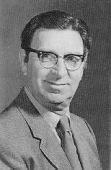
ASU remembers
Vernon L. Hastings
Division of Construction - 1985 to 1987

July 19, 2012
Colonel Vernon L.Hastings, 94, passed away July 19, 2012. He enlisted in the Army Air Corps in 1939, and graduated from Army Air Forces Officer Candidate School in 1942. Hastings assumed his first command position as a training detachment for pre-meterology cadets at the University of Wisconsin. After the end of WWII he graduated from the University of Nebraska in with a bachelor’s degree in mechanical engineering. Colonel Hastings then served as base engineer at Goose Bay, Labrador as site support engineer for several arctic weather and radar stations. He then became chief of the Procurement Branch of the US Army Chemical Procurement District in Chicago, Illinois, before being assigned as deputy chief of Air Force Logistics Command’s Facilities Maintenance Branch at Wright-Patterson AFB, Ohio. In 1955 he earned his master’s degree in industrial engineering at Oklahoma Agricultural and Mechanical College. He then joined the Air Force Ballistic Missile Division where he directed the design of all US operational base facilities for the Atlas intercontinental ballistic missile (ICBM). He also led the site selection team for what became Vandenberg AFB, which was the location for construction of the first Atlas ICBM operational launch complex. General Curtis LeMay, Air Force vice chief of staff, appointed him as Site Activation Task Force commander for two of the earliest ICBM operational squadrons. Later he was appointed chairman of the Missile Sites Labor Committee, created at the direction of President Kennedy, to reduce labor conflicts and foster continuous, peaceful work on projects at missile and space sites throughout the US. In 1962 Colonel Hastings began his academic career by directing the Civil Engineering Center at the Air Force Institute of Technology. He then served as assistant to the dean and assistant dean of Purdue University’s School of Technology. In 1973 he became director of the construction program at ASU. ASU’s vice president of academic research at the time told him the construction program was not an academic subject and should not be on a university campus. However, Hastings persevered and in 1985 received approval for students to pursue a master’s degree in the subject. He continued as director of the Division of Construction until he retired with emeritus status in 1987. By then, construction education had earned legitimacy through accreditation at about 100 colleges and universities, and so-called “C-schools” were producing annually thousands of graduates. More than twenty years beyond his retirement, Professor Hastings continued to travel the country advising faculty and students on the applicability of the “learn by doing” philosophy in their C-school programs. He also encouraged professors and students to use information from the Atlas ICBM facilities project as tools for learning generally about large-scale construction. Colonel Hastings was a member of several professional organizations. He was inducted to the Order of the Engineer and designated as Fellow in the American Institute of Constructors. He was predeceased by his wife, Norma and a son. He is survived by his wife, Vi, a daughter, two sons, a sister and cousins.